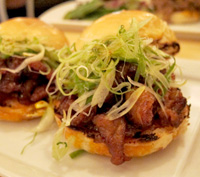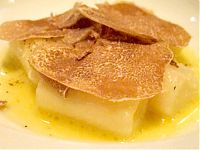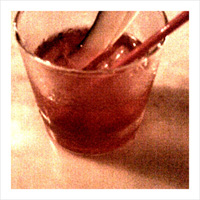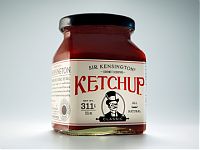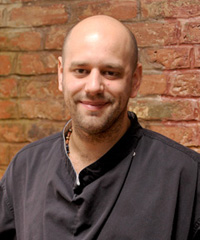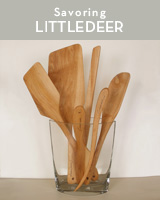The Wine of Paris
by Everett Hutt
November 17, 2009
It is one of those things that every Parisian knows about but no one you know has ever experienced: Wine from Paris. “What?” you say. Isn’t it too cold and too polluted to grow grapes for wine in Paris? The answer is yes, but no one makes any pretense to make great wines in Paris. Rather, the vineyards are a throwback to another era.
As far back as the Roman era, people were planting grapes in the Paris area, both for fruit consumption and to make wine. Montmartre, the tallest hill in the Paris basin (and now part of the 18th arrondissement) was the primary spot for the vineyards, and by the end of the 18th century, the hill was full of vines. The area was known for making mostly sweet white wines (hence the area northeast of Montmartre is still known today as la goutte d’or — “The Golden Drop”). Nearby, there were other areas—today all within the confines of Paris—that also had wine-making traditions, notably on the eastern Belleville heights (19th arrondissement) and to the southeast in the village of Vaugirard (15th arrondissement).
By the beginning of the 20th century, however, the vines in Paris were nothing more than a memory, as a burgeoning Paris spread out erasing all trace of agriculture. But in the early 1930s, Montmartre residents rebelled. They decided to block development of one of the last open plots of land on the north side of the hill. With the help of various not-for-profit associations aimed at saving the culture and traditions of old Montmartre, they succeeded in convincing the city to plant vines once again. Thus in 1932, the city planted 0.4 acres of land for wine cultivation. The grapes are mostly Gamay, Pinot Noir, a now-banned hybrid of both, and a smattering of other grapes. The site yields only 1500 bottles a year. A rare cuvée indeed.
It took another 50 years for Paris to plant more vines. It planted in the Square Georges Brassens (near the old Vaugirard vineyards) in 1983, and in the Bellevue and Bercy areas in the 1990s. Bercy never produced wine, but was for centuries the main wine depot in Paris, and the Brassens and Bellevue produce limited quantities of wine.
For Parisians, however, the wines from Montmartre are by far the best known. Every October, local residents organize a Harvest Celebration (La Fête des Vendanges de Paris). This lively four-day festival turns the area around the Sacré-Coeur Basilica in Montmartre into a street fair, with food and wine producers from around France coming to sell their wares. I particularly liked the selection of Provence olive oils on offer this year. There are also parades, activities for children, visits to the vineyard and even fireworks. But the heart of the festival is the release of the prior year’s Montmartre wine.
The winemaker, Francis Bourdin, who handles all of Paris’ winemaking efforts, told me that his goal with the Montmartre wine is to make a “serious” wine. He described the 2008 Vin du Clos Montmartre, Cuvée Les trois baudets as a “charming cabaret wine” with lots of ripe red fruits: red currants, raspberries and cranberries.
Hmmm. After a tasting, I would simply say it is “bad.” If pressed, I would say that it tasted like unripe watered-down cherries, and that the wine was slightly too acidic. It reminds me of the cheap wines I drank at communal parties as a student.
My criticism misses the point, however. It is sure that you do not drink this wine for the taste, but for the pleasure, for the history and for the atmosphere. And if you do not buy it during the festival, you are likely never to find it, as it sells out nearly every year during the festival, even at the steep price of $60 per bottle!



